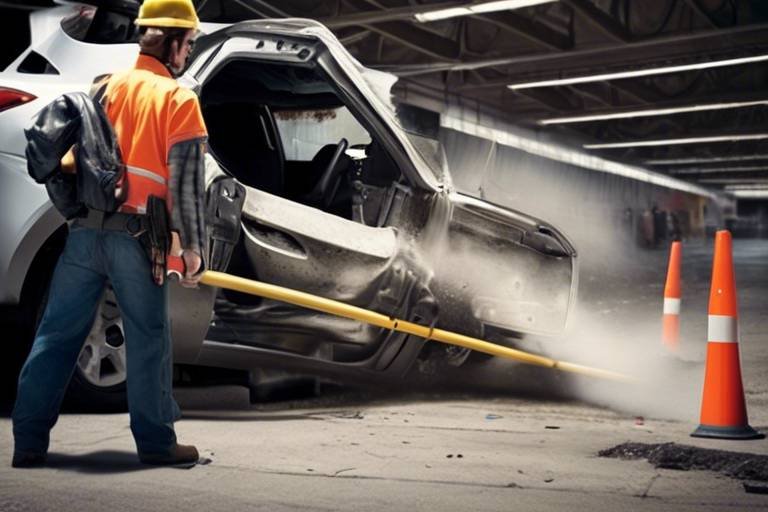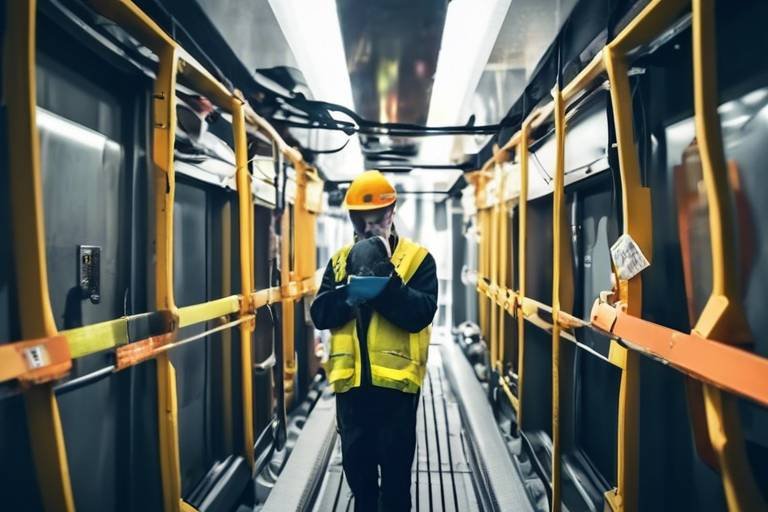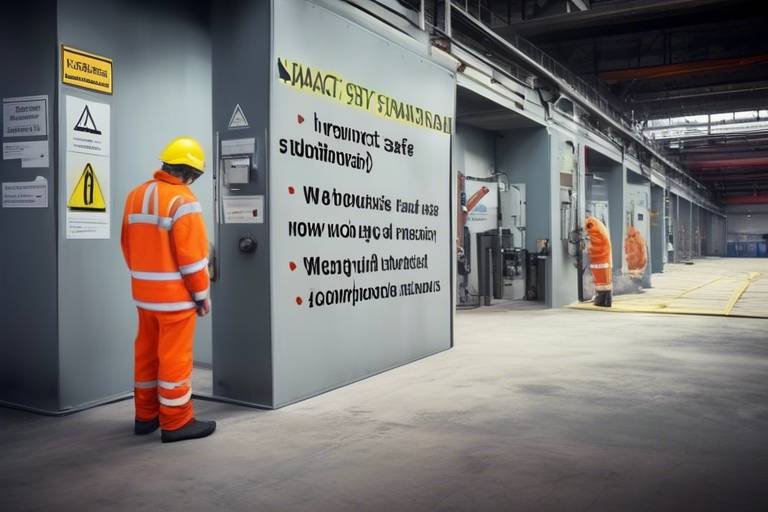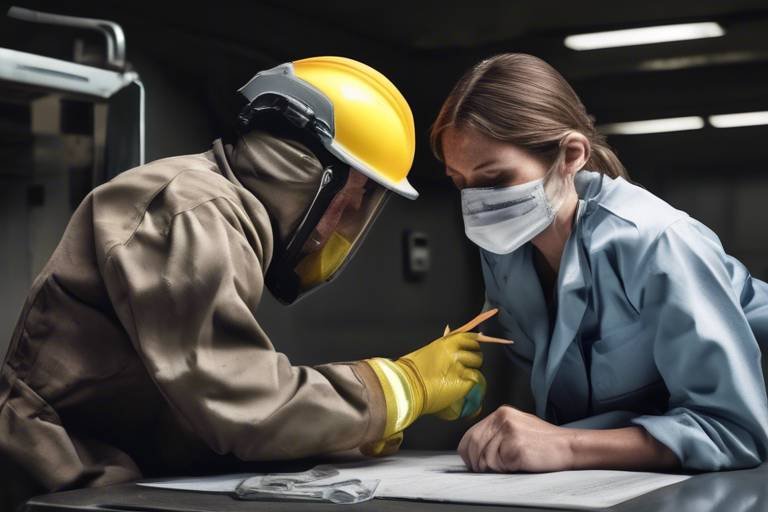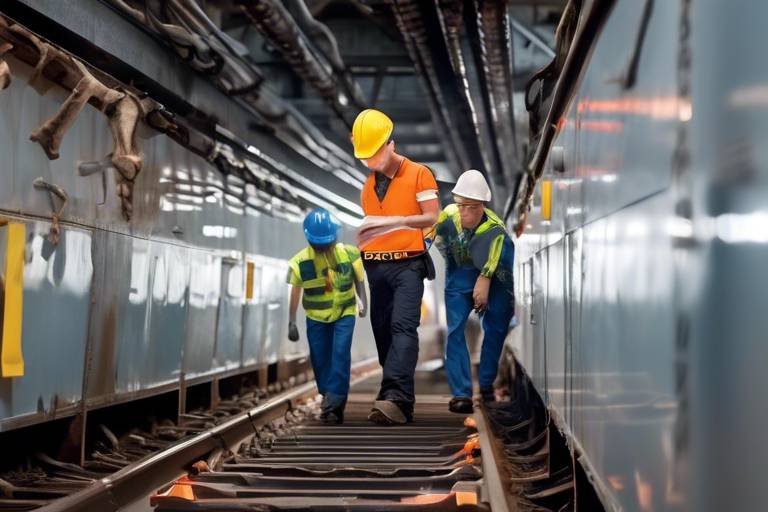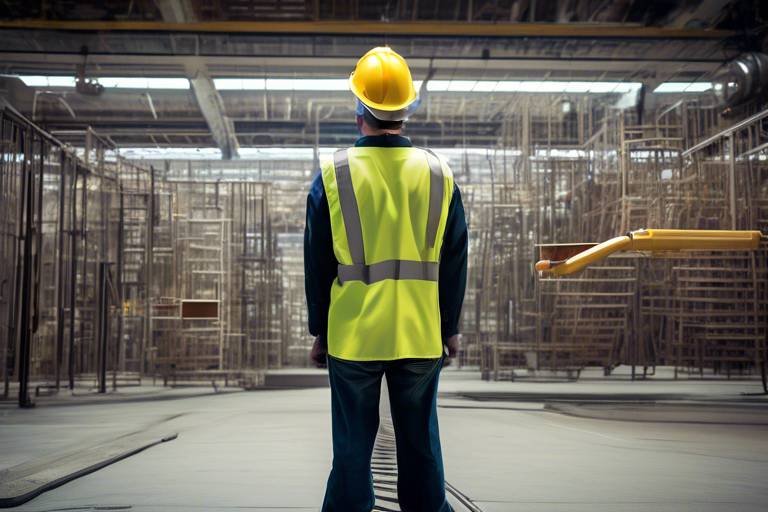The Influence of Human Behavior on Safety: A Crucial Study
This article explores how human behavior impacts safety across various domains, highlighting the psychological, social, and environmental factors that contribute to safe practices and incidents. Understanding these dynamics is not just an academic exercise; it’s a matter of life and death in many situations. Whether we’re talking about workplace safety, public health, or even our daily commute, the choices we make can have profound consequences. So, let’s dive into the intricate web of factors that shape our safety behaviors.
Understanding the psychological aspects of safety can help identify behaviors that either promote or hinder safe practices in various environments, such as workplaces and public spaces. For instance, have you ever noticed how a simple change in mindset can drastically alter a person’s approach to safety? When individuals feel empowered and informed, they are more likely to engage in proactive safety measures. Conversely, fear or complacency can lead to negligence, resulting in dangerous situations.
Consider this: in a workplace setting, employees who are aware of the potential hazards and feel supported by their management are more likely to adhere to safety protocols. This creates a culture of safety where everyone is on the same page. On the flip side, if employees feel that their safety concerns are dismissed, they may take shortcuts, believing that their actions won’t have consequences. This psychological disconnect can be detrimental, leading to accidents that could have been easily avoided.
Social interactions and group dynamics play a significant role in influencing individual safety behaviors, often leading to either compliance or risky actions depending on peer influences. Have you ever been in a situation where you felt pressured to act against your better judgment because everyone else was doing it? This phenomenon is common in group settings, where the desire to fit in can overshadow personal safety concerns.
For example, in a construction site, if one worker decides to skip wearing a helmet because “nobody else is wearing one,” this can create a ripple effect, leading others to follow suit. The social pressure to conform can be incredibly powerful, often resulting in dangerous behaviors. Therefore, fostering an environment where safety is prioritized and openly discussed can help mitigate these risks. When safety becomes a group norm, individuals are less likely to engage in risky behaviors.
Cultural norms and values shape how individuals perceive safety and risk, affecting their decision-making processes in critical situations. Different cultures may have varying attitudes towards risk-taking and safety precautions. For instance, in some cultures, taking risks is seen as a sign of bravery, while in others, it is viewed as reckless behavior.
This cultural lens can significantly influence workplace safety. In environments where safety is a shared value, employees are more likely to communicate hazards and adhere to safety protocols. On the other hand, in cultures that prioritize speed over safety, individuals may overlook essential safety measures, leading to increased incidents. Understanding these cultural differences is crucial for organizations aiming to create a safer work environment.
Effective communication is essential in promoting safety; different styles can either enhance understanding or contribute to misunderstandings, impacting overall safety outcomes. Imagine a scenario where a safety briefing is conducted, but the information is delivered in a complex jargon that only a few understand. This can lead to confusion and misinterpretation, ultimately compromising safety.
To foster a culture of safety, organizations should adopt clear and straightforward communication strategies. This includes using visual aids, encouraging questions, and ensuring that everyone feels comfortable discussing safety concerns. By breaking down communication barriers, organizations can enhance safety awareness and compliance among employees.
Proper training and education can significantly influence safety behavior by equipping individuals with the knowledge and skills necessary to recognize and mitigate risks. Think of training as the foundation of a safe environment; without it, everything else is built on shaky ground. Regular training sessions that are engaging and relevant can empower employees to take ownership of their safety.
Moreover, ongoing education ensures that individuals are up-to-date with the latest safety protocols and technologies. This not only reduces the likelihood of accidents but also fosters a culture of continuous improvement. When employees feel competent and confident in their safety knowledge, they are more likely to act responsibly and encourage their peers to do the same.
Groupthink can lead to poor safety decisions when individuals conform to group opinions, often at the expense of critical thinking and risk assessment. It’s like a game of “telephone” where the original message gets distorted as it passes through the group. In safety contexts, this can mean ignoring warning signs or dismissing valid concerns simply because they don’t align with the majority opinion.
To combat groupthink, organizations should encourage open dialogue and critical questioning. By fostering an environment where dissenting opinions are valued, teams can make more informed decisions that prioritize safety over conformity.
The physical environment plays a crucial role in shaping human behavior related to safety, including factors such as design, layout, and accessibility of safety resources. Think about it: a well-designed workspace can promote safe behaviors, while a cluttered or poorly lit area can increase the risk of accidents. The environment we operate in is not just a backdrop; it actively influences our actions.
Effective design can enhance safety by minimizing hazards and facilitating safe behaviors, demonstrating the importance of considering human factors in planning and architecture. For instance, incorporating clear signage, adequate lighting, and ergonomic layouts can significantly reduce the likelihood of accidents. It’s like setting up a game board where the rules encourage safe play.
Ensuring that safety resources are easily accessible can significantly influence individual behavior, promoting proactive safety measures and reducing the likelihood of accidents. Imagine a workplace where first aid kits are locked away in a cabinet that’s hard to reach. In an emergency, every second counts; if resources aren’t readily available, the consequences can be dire.
By making safety resources visible and accessible, organizations can empower employees to act swiftly in crisis situations. This not only enhances safety but also fosters a culture where everyone feels responsible for maintaining a safe environment.
- What are the key psychological factors that influence safety behavior? Psychological factors include individual mindset, fear, and empowerment. A positive mindset can enhance adherence to safety protocols.
- How does culture affect safety in the workplace? Cultural norms shape attitudes towards risk and safety, influencing how individuals respond to hazards.
- What role does communication play in promoting safety? Clear communication is vital for understanding safety protocols and addressing concerns effectively.
- Why is training important for safety behavior? Training equips individuals with the necessary skills and knowledge to recognize and mitigate risks.

The Psychology of Safety
This article explores how human behavior impacts safety across various domains, highlighting the psychological, social, and environmental factors that contribute to safe practices and incidents.
Understanding the psychological aspects of safety is vital for identifying behaviors that can either promote or hinder safe practices in different environments, whether it's at work, in public spaces, or even at home. Have you ever thought about how your mindset influences your safety decisions? For instance, when people feel confident in their abilities, they are often more likely to take risks, sometimes overlooking safety protocols. Conversely, anxiety can lead to over-cautiousness, which might also impede effective action in emergencies.
One of the key elements in the psychology of safety is the concept of perception of risk. How individuals perceive risk can significantly influence their behavior. For example, if someone views a situation as dangerous, they are more likely to take precautions. On the other hand, if they underestimate the risks involved, they may engage in reckless behavior. This discrepancy can be attributed to various factors, including past experiences, training, and even personal beliefs. Understanding these factors can help organizations tailor their safety programs to address these perceptions effectively.
Moreover, cognitive biases play a significant role in safety-related decisions. For instance, the optimism bias leads individuals to believe that they are less likely to experience negative events compared to others. This can result in a false sense of security, making them disregard safety measures. Similarly, the confirmation bias can cause individuals to seek information that supports their existing beliefs about safety, while ignoring evidence that contradicts those beliefs. Recognizing these biases is crucial in fostering a culture of safety.
Another important aspect is the emotional state of individuals. Emotions can significantly influence decision-making processes. For example, someone who is stressed or distracted may overlook safety protocols, while someone who feels calm and focused is more likely to adhere to them. This emotional regulation can be crucial in high-pressure situations where safety is at stake.
In addition to individual psychology, the social environment also shapes safety behaviors. People often look to their peers for cues on how to act in various situations. This phenomenon can lead to both positive and negative outcomes. For instance, if a group consistently prioritizes safety, individuals are likely to follow suit. However, if risky behavior is normalized within a group, it can lead to dangerous situations. Understanding these dynamics can help in developing strategies that promote safe practices within teams and organizations.
To sum it up, the psychology of safety is a complex interplay of perception, cognitive biases, emotional states, and social influences. By delving into these aspects, organizations can create more effective safety protocols that resonate with individuals on a deeper psychological level, ultimately fostering a culture of safety that is both proactive and responsive.
- What is the importance of understanding the psychology of safety? Understanding the psychology of safety helps identify behaviors that promote or hinder safety practices, allowing for better safety protocols.
- How do cognitive biases affect safety decisions? Cognitive biases can lead to misjudgments about risk, causing individuals to either underestimate dangers or overlook important safety measures.
- Can emotions impact safety behavior? Yes, emotional states can significantly influence decision-making processes, affecting how individuals respond to safety protocols.
- What role does the social environment play in safety? The social environment influences individual behavior, as people often look to their peers for cues on how to act in various situations.

When we talk about safety, we often think of rules, regulations, and equipment. But have you ever stopped to consider the power of social dynamics? Our interactions with others can significantly influence our safety behaviors, often in ways we might not even realize. Imagine you're in a crowded workplace, and everyone around you is ignoring safety protocols. What do you think happens? Most people, driven by a desire to fit in, might also start to take shortcuts, even if they know it's unsafe. This phenomenon highlights just how crucial social dynamics are in shaping our safety practices.
One of the most compelling aspects of social dynamics is the concept of peer influence. We are inherently social beings, and our behaviors are often guided by the actions and attitudes of those around us. If a majority of your colleagues consistently disregard safety measures, it can create a culture where risky behavior becomes the norm. This can lead to a cycle where individuals feel pressured to conform, even when they know better. On the flip side, a supportive environment that prioritizes safety can encourage individuals to adopt safer practices. It's like being in a team where everyone is cheering each other on to make the right choices!
Another critical factor is the role of leadership in establishing safety norms. Leaders set the tone for the organization, and their commitment to safety can have a ripple effect throughout the team. When leaders actively promote safety practices, it fosters an environment of trust and accountability. Employees are more likely to speak up about unsafe conditions or behaviors when they feel supported by their supervisors. This creates a culture where safety is not just a checkbox, but a shared value.
To further illustrate the impact of social dynamics on safety, consider the following table that summarizes key influences:
| Influence | Description |
|---|---|
| Peer Pressure | Individuals may engage in risky behaviors to conform to the actions of their peers. |
| Leadership Commitment | Strong safety leadership encourages a culture of accountability and proactive safety measures. |
| Group Dynamics | Groupthink can lead to poor decision-making regarding safety, as individuals may prioritize consensus over critical analysis. |
Additionally, social dynamics can manifest in various forms, such as groupthink, where the desire for harmony in a group leads to irrational or dysfunctional decision-making. This can be particularly dangerous in safety-critical situations, where the stakes are high. Individuals may suppress their doubts or concerns in favor of maintaining group cohesion, which can result in overlooking significant safety risks. It's essential to create an environment where diverse opinions are valued and encouraged, allowing for thorough discussions about safety practices.
In conclusion, understanding the social dynamics at play in safety contexts is vital. By recognizing how peer influence, leadership commitment, and group dynamics shape our behaviors, we can take proactive steps to foster a culture of safety. Remember, safety is not just about individual actions; it’s about the collective behavior of a community. So, the next time you find yourself in a situation where safety is at stake, think about the social dynamics around you. Are they supporting safe practices or leading you down a risky path?
- How can I influence my peers to adopt safer practices?
Lead by example! Demonstrating safe behaviors can inspire others to follow suit. - What should I do if I notice unsafe practices among my colleagues?
Speak up! Address the issue respectfully and suggest safer alternatives. - How can leadership improve safety culture?
Leadership should actively promote safety, provide training, and encourage open communication about safety concerns.
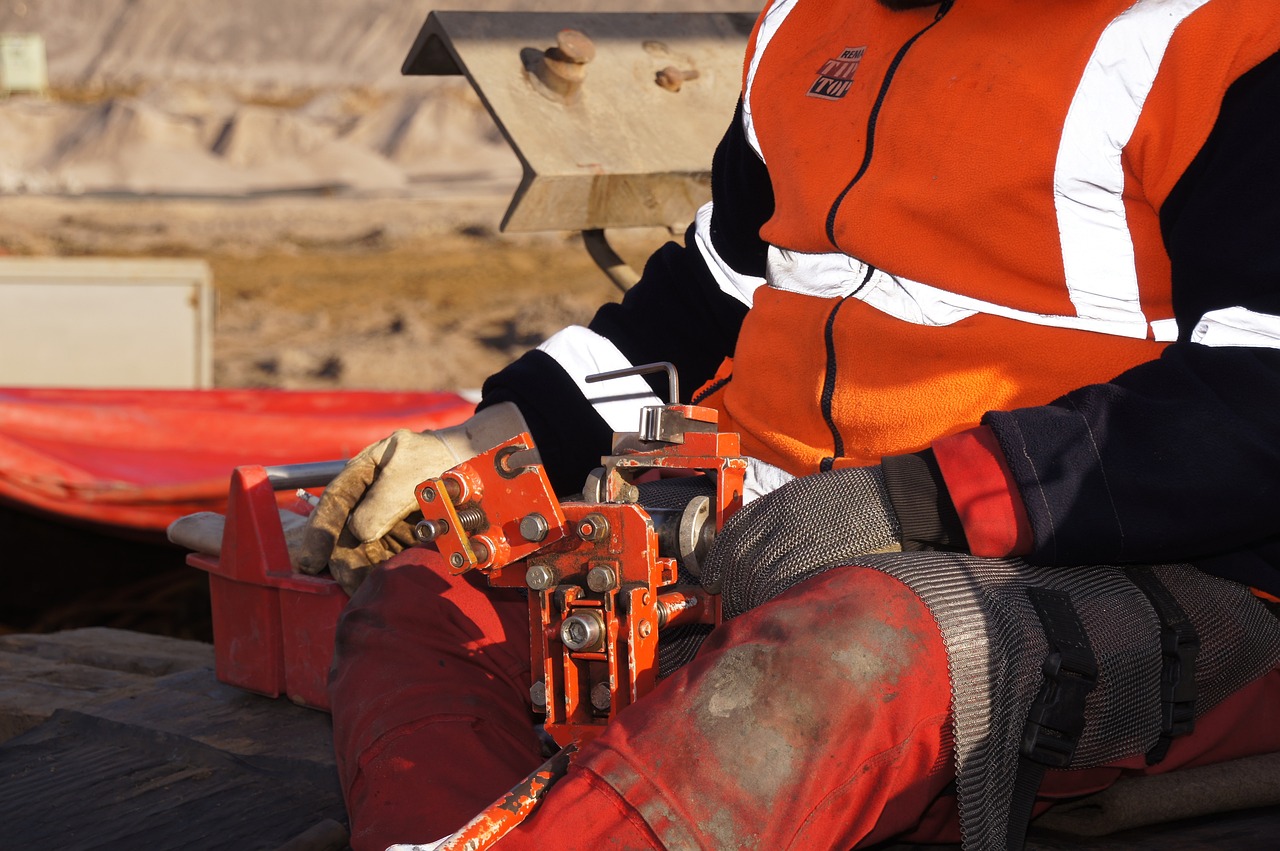
Cultural influences play a pivotal role in shaping how individuals perceive and respond to safety situations. In various communities, the values, beliefs, and practices that are passed down through generations can significantly affect safety behaviors. For instance, in cultures where risk-taking is celebrated, individuals may be less likely to adhere to safety protocols. Conversely, cultures that prioritize caution and collective well-being often see higher compliance with safety measures. This dichotomy illustrates that our backgrounds can dictate not only our actions but also our attitudes towards safety.
Consider this: when people grow up in an environment that emphasizes the importance of safety, they are more likely to internalize those values. This is particularly evident in workplaces where safety training is integrated into the company's culture. Employees who come from backgrounds that value safety are more inclined to engage in safe practices and encourage their peers to do the same. On the other hand, if safety is viewed as an afterthought or an inconvenience, individuals may prioritize productivity over safety, leading to hazardous situations.
Moreover, cultural narratives around safety can influence how risks are assessed. For example, in some cultures, there may be a tendency to downplay the dangers associated with certain activities, viewing them as part of life’s adventure. This mindset can lead to a lack of precautionary measures, potentially resulting in accidents. In contrast, cultures that emphasize preventive measures often see a more proactive approach to safety, where individuals actively seek out information and resources to mitigate risks.
Additionally, the role of language and communication cannot be overlooked. Different cultures have unique ways of expressing concerns about safety, which can either facilitate or hinder effective dialogue. In some cultures, direct communication about safety issues may be perceived as confrontational, leading to misunderstandings and a lack of action. In others, open discussions about safety are encouraged, fostering a culture of transparency and shared responsibility.
To further illustrate the impact of cultural influences on safety behavior, consider the following table that outlines key cultural factors and their implications for safety practices:
| Cultural Factor | Implication for Safety |
|---|---|
| Risk Perception | Influences how individuals assess and respond to potential hazards. |
| Communication Styles | Affects how safety concerns are raised and addressed within groups. |
| Collective vs. Individualistic Values | Shapes the focus on community safety versus personal responsibility. |
| Historical Context | Past experiences with safety incidents can influence current behaviors. |
In conclusion, understanding cultural influences on safety behavior is essential for developing effective safety protocols. By recognizing the diverse perspectives that individuals may bring to safety discussions, organizations can tailor their approaches to foster a more inclusive and effective safety culture. This not only enhances compliance but also empowers individuals to take ownership of their safety and that of their peers.
- How does culture impact safety in the workplace?
Culture shapes attitudes towards safety, influencing compliance and risk assessment. - What role does communication play in safety behavior?
Effective communication fosters understanding and encourages proactive safety measures. - Can cultural training improve safety practices?
Yes, cultural training can enhance awareness and promote a unified approach to safety.
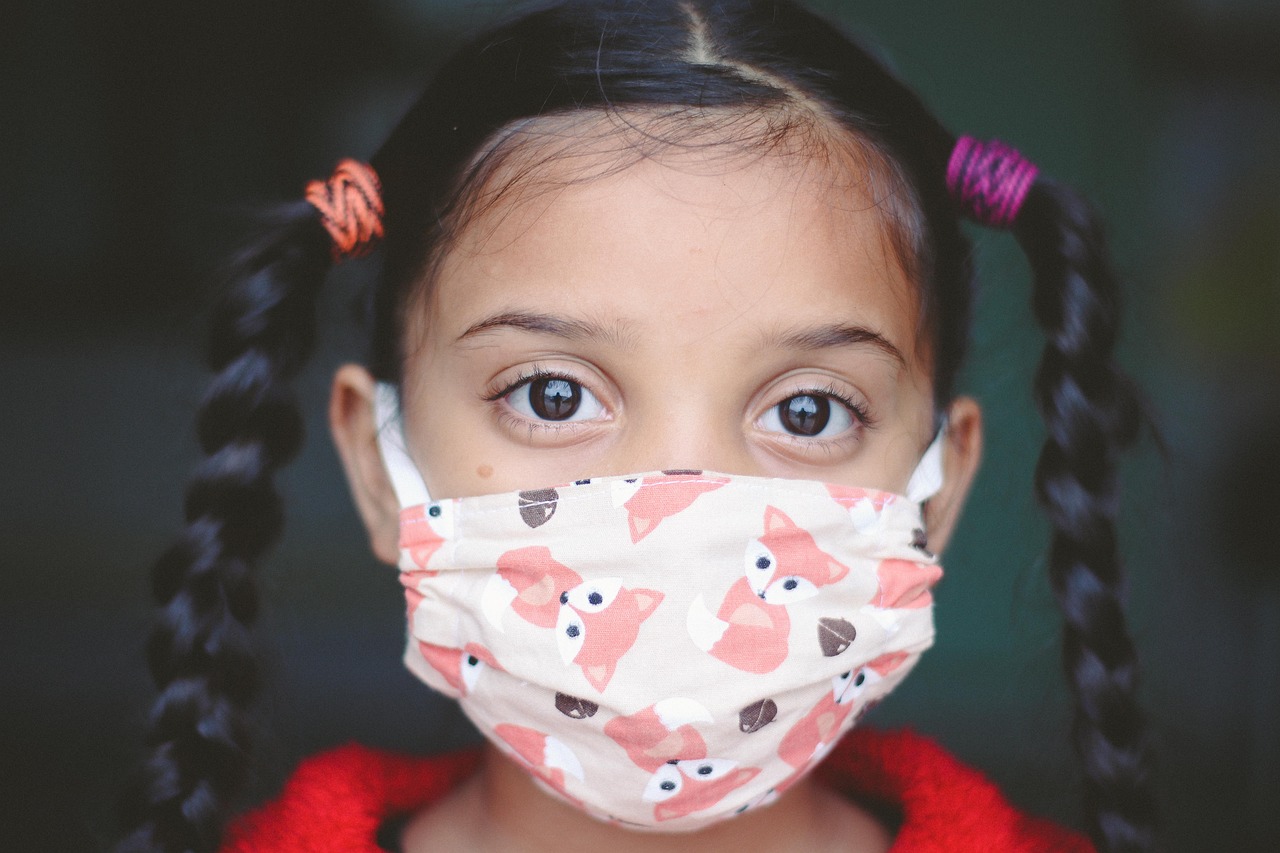
Effective communication is the backbone of any organization, particularly when it comes to ensuring safety. When individuals communicate clearly, they can share critical information that helps prevent accidents and promotes a culture of safety. However, different communication styles can either enhance understanding or lead to confusion, ultimately impacting safety outcomes. For instance, consider a workplace where safety protocols are communicated in a convoluted manner; employees may misunderstand the instructions, leading to potential hazards.
One of the most significant aspects of communication in safety is the clarity of the message. Direct communication tends to be more effective than indirect or vague messaging. When safety guidelines are presented straightforwardly, employees are more likely to grasp the information and implement it in their daily routines. This is particularly true in high-stakes environments, such as construction sites or healthcare facilities, where the margin for error is minimal.
Moreover, the tone and style of communication can also play a pivotal role. A supportive and open communication style encourages employees to voice their concerns or report unsafe conditions without fear of retribution. When individuals feel comfortable speaking up, it fosters a proactive safety culture where potential issues are addressed before they escalate into serious incidents. In contrast, a more authoritarian style may stifle communication, leading to a lack of reporting and ultimately increasing risks.
To illustrate the impact of communication styles on safety, consider the following table that summarizes different styles and their effects:
| Communication Style | Impact on Safety |
|---|---|
| Direct | Enhances clarity and understanding of safety protocols. |
| Indirect | Can lead to misunderstandings and overlooked safety measures. |
| Supportive | Encourages reporting of safety issues and fosters a safety culture. |
| Authoritarian | May suppress communication, leading to increased risks. |
Additionally, non-verbal communication plays a crucial role in safety. Body language, eye contact, and gestures can all convey messages about safety practices. For example, a supervisor who frequently checks in with their team and maintains eye contact while discussing safety protocols is likely to foster a more attentive and engaged workforce. On the other hand, a lack of engagement can signal that safety is not a priority, which can lead to complacency.
In conclusion, the style of communication within an organization significantly affects safety outcomes. By adopting clear, direct, and supportive communication methods, organizations can enhance safety awareness and compliance among employees. It’s essential to recognize that communication is not just about words; it encompasses the entire interaction process, including non-verbal cues and the overall atmosphere of discussion. Therefore, investing in effective communication training can be a game-changer in promoting a safer work environment.
- What are the key elements of effective safety communication? Effective safety communication includes clarity, directness, and an open environment for feedback.
- How can an organization promote a culture of safety? By encouraging open dialogue and providing training on safety protocols, organizations can foster a culture of safety.
- What role does non-verbal communication play in safety? Non-verbal cues can reinforce safety messages and indicate the seriousness of safety practices.
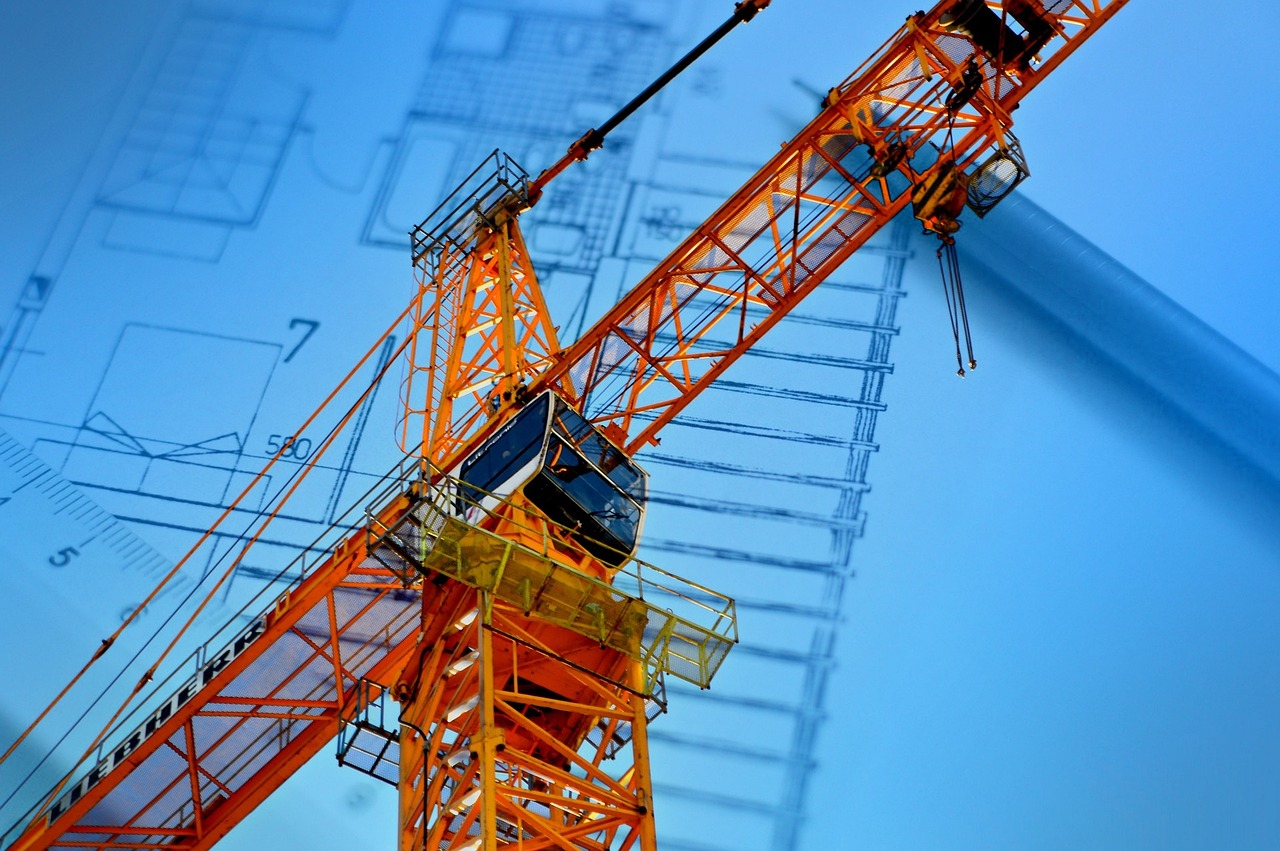
When it comes to safety, training and education are not just optional; they are absolutely vital. Imagine a world where every individual is equipped with the knowledge to recognize hazards and take proactive measures. This is the power of effective training. It’s not merely about knowing the rules; it’s about understanding the *why* behind them. When people grasp the reasoning behind safety protocols, they are more likely to adhere to them, creating a culture of safety that permeates every aspect of their lives.
Consider this: a well-trained employee is like a seasoned pilot navigating through turbulent weather. They know how to react, what procedures to follow, and how to keep themselves and others safe. Conversely, an untrained individual might panic, leading to decisions that could endanger themselves and those around them. This analogy highlights the critical role that education plays in shaping behavior. It’s not just about compliance; it’s about fostering a mindset that prioritizes safety.
Moreover, effective training programs often incorporate practical, hands-on experiences that engage learners and reinforce their understanding. For instance, a safety training session that includes simulations or role-playing can significantly enhance retention and application of safety procedures. In fact, studies have shown that individuals who participate in interactive training sessions retain information far better than those who only receive lectures. This is particularly important in high-risk environments where the stakes are high, and the margin for error is slim.
Furthermore, ongoing education is equally important. Safety is not a one-time lesson but a continuous journey. Regular refresher courses and updates on new safety protocols ensure that individuals remain vigilant and informed. This is especially crucial in industries that are constantly evolving, such as construction or healthcare, where new technologies and methodologies can change the safety landscape overnight.
To illustrate the impact of training and education on safety, let’s look at a few key benefits:
- Increased Awareness: Training raises awareness about potential hazards and teaches individuals how to mitigate them.
- Enhanced Skills: Proper education equips individuals with the skills needed to handle emergencies effectively.
- Improved Compliance: When people understand the importance of safety measures, they are more likely to follow them.
- Reduction in Accidents: A well-trained workforce is statistically less likely to experience accidents and injuries.
In conclusion, the impact of training and education on safety cannot be overstated. It shapes not just individual behavior but also the overall culture of safety within organizations. As we continue to navigate the complex dynamics of human behavior in safety contexts, investing in comprehensive training programs will undoubtedly yield significant dividends in terms of safety outcomes. After all, in the realm of safety, knowledge is not just power; it’s a lifeline.
1. Why is training important for safety?
Training is crucial because it equips individuals with the knowledge and skills needed to recognize hazards and respond appropriately, ultimately reducing the risk of accidents.
2. How often should safety training be conducted?
Safety training should be ongoing, with regular refresher courses to keep individuals updated on new protocols and reinforce their understanding.
3. What are the benefits of hands-on training?
Hands-on training enhances retention and application of safety procedures, as it engages learners and allows them to practice in realistic scenarios.
4. How can organizations foster a culture of safety?
Organizations can foster a culture of safety by prioritizing training, encouraging open communication about safety concerns, and recognizing and rewarding safe behaviors.

When it comes to safety decisions, the phenomenon of groupthink can be a double-edged sword. On one hand, working in groups can lead to enhanced collaboration and shared insights; on the other hand, it can result in a dangerous tendency to prioritize consensus over critical analysis. Have you ever been in a meeting where everyone seemed to nod in agreement, even when you could sense that some ideas were questionable? That’s groupthink at work. It often stems from a desire for harmony and fear of conflict, prompting individuals to suppress their doubts and align with the majority, which can lead to poor safety outcomes.
Consider this: when a team is faced with a safety decision, the pressure to conform can overshadow the necessity for rigorous evaluation of risks. For instance, in a workplace setting, if a safety protocol is challenged by one member but the rest of the team agrees to stick with the status quo, the potential risks associated with that decision may go unexamined. This can result in serious consequences, especially if the existing protocol is outdated or ineffective. The impact of groupthink can be particularly pronounced in high-stakes environments, such as construction sites or healthcare facilities, where the margin for error is slim.
Research has shown that groupthink can be mitigated through various strategies. Here are some effective approaches:
- Encourage Open Dialogue: Create an environment where team members feel safe to express dissenting opinions without fear of repercussions.
- Designate a Devil's Advocate: Assign someone to intentionally challenge ideas and assumptions, prompting deeper analysis of safety decisions.
- Seek External Input: Bringing in outside perspectives can help break the cycle of conformity and introduce fresh ideas.
By implementing these strategies, organizations can foster a culture of safety that prioritizes critical thinking and thorough risk assessment. It’s essential to recognize that while consensus can be valuable, it should never come at the expense of safety. In fact, encouraging diverse viewpoints can lead to more robust safety protocols and ultimately save lives.
In conclusion, understanding the dynamics of groupthink is crucial for any organization committed to safety. By acknowledging the potential pitfalls of conformity and actively working to counteract them, teams can make informed decisions that prioritize the well-being of everyone involved. After all, in the realm of safety, it’s better to challenge the status quo than to blindly follow it.
- What is groupthink? Groupthink is a psychological phenomenon where the desire for harmony in a group leads to irrational decision-making, often resulting in poor outcomes.
- How can groupthink affect safety decisions? Groupthink can lead to a lack of critical analysis and risk assessment, resulting in safety protocols that may be outdated or ineffective.
- What strategies can mitigate groupthink? Encouraging open dialogue, designating a devil's advocate, and seeking external input are effective strategies to counteract groupthink.
- Why is it important to challenge the status quo in safety? Challenging the status quo encourages critical thinking and thorough risk assessment, which are vital for ensuring safety in any environment.

When we think about safety, our minds often drift to rules, regulations, and personal responsibility. However, the physical environment plays a pivotal role in shaping how we behave in terms of safety. Imagine walking into a workplace where the lighting is dim, the layout is cluttered, and safety signs are barely visible. How do you think that affects your perception of safety? It’s like trying to navigate a maze blindfolded—uncertainty breeds risk. Environmental factors can either enhance safety or create hazards, and understanding this relationship is crucial for promoting safe practices.
Consider the layout of a space. An open floor plan might encourage collaboration, but if it’s not designed with safety in mind, it could lead to accidents. For instance, if emergency exits are not clearly marked or are obstructed by furniture, individuals may struggle to evacuate in a crisis. This highlights the importance of design for safety. Architects and planners must prioritize safety features, ensuring that every aspect of the environment supports safe behavior.
Additionally, accessibility is a key element in the environmental safety equation. If safety resources—like first aid kits, fire extinguishers, or emergency exits—are hard to reach, people are less likely to use them in an emergency. This can lead to dire consequences. Ensuring that these resources are not only available but also conveniently located can significantly influence individual behavior. It’s like having a fire extinguisher behind a locked door; in an emergency, every second counts, and accessibility can be the difference between safety and disaster.
Moreover, the design of safety features plays a crucial role. For example, well-placed signage can guide individuals effectively during emergencies. A study found that clear and visible safety signage reduced accident rates by over 30%. This shows that thoughtful design can lead to a safer environment. Just like a well-organized toolbox, when everything is in its place, it’s easier to find what you need when you need it.
To further illustrate the impact of environmental factors on safety, consider the following table:
| Environmental Factor | Impact on Safety |
|---|---|
| Lighting | Poor lighting can lead to accidents due to reduced visibility. |
| Layout | A cluttered or confusing layout can obstruct emergency exits and pathways. |
| Signage | Clear and accessible signage can guide individuals effectively during emergencies. |
| Accessibility | Easy access to safety resources encourages proactive safety measures. |
In conclusion, the environment we inhabit significantly influences our safety behaviors. From the design of a workspace to the accessibility of safety resources, each element plays a crucial role in shaping our actions. By prioritizing environmental factors, we can foster a culture of safety that not only reduces the likelihood of accidents but also empowers individuals to take charge of their safety. After all, a safe environment is not just a luxury; it's a necessity.
- How can I improve safety in my workplace?
Start by assessing the layout, ensuring clear signage, and making safety resources easily accessible. - What role does communication play in safety?
Effective communication can enhance understanding and compliance with safety protocols. - Why is training important for safety?
Proper training equips individuals with the knowledge and skills to recognize and mitigate risks effectively.

When we think about safety, the first images that often come to mind are those of warning signs, protective gear, or emergency exits. However, the design of our environments plays an equally, if not more, significant role in enhancing safety. Imagine walking into a building where the layout is intuitive, with clear pathways and visible exits; it immediately puts your mind at ease. This is the essence of design for safety. It’s about creating spaces that not only look good but also function effectively to minimize hazards and promote safe behaviors.
Effective design involves understanding human behavior and anticipating how people will interact with their surroundings. For instance, consider the placement of fire extinguishers. They should be easily accessible and clearly marked, yet often we find them tucked away in less visible locations. This oversight can lead to delays in emergencies, showcasing how poor design can contribute to unsafe situations. A well-thought-out design incorporates safety features right from the planning stage, ensuring that safety is not an afterthought but a fundamental aspect of the environment.
Moreover, the use of materials is crucial in design for safety. For example, using non-slip flooring in areas prone to spills can significantly reduce the risk of falls. Similarly, incorporating rounded edges on furniture can help prevent injuries, especially in spaces frequented by children. By choosing materials that enhance safety, designers can create environments that naturally guide individuals towards safer behaviors.
Another essential aspect is lighting. Adequate lighting can greatly affect safety in any environment. Poorly lit areas can lead to accidents and create a sense of unease. On the other hand, well-lit spaces not only deter crime but also allow individuals to navigate their surroundings confidently. Thus, effective design should prioritize natural and artificial lighting to ensure that all areas are visible and inviting.
To illustrate the impact of design on safety, let’s look at a few examples of environments where thoughtful design has made a significant difference:
| Environment | Design Feature | Safety Benefit |
|---|---|---|
| Office Spaces | Open Layouts | Facilitates quick evacuation and enhances visibility |
| Public Parks | Clear Pathways and Signage | Reduces the risk of accidents and improves navigation |
| Schools | Secure Entrances | Enhances security and prevents unauthorized access |
In conclusion, designing for safety is not merely about adhering to regulations; it’s about fostering an environment where individuals feel secure and are encouraged to engage in safe practices. By considering the psychological, social, and physical factors that influence our behaviors, we can create spaces that not only protect but also empower individuals to act safely. As we continue to evolve in our understanding of human behavior, the importance of thoughtful design in promoting safety will only grow.
- What is design for safety?
Design for safety refers to the intentional planning of environments to minimize hazards and promote safe behaviors. It encompasses aspects like layout, materials, and lighting.
- How does lighting affect safety?
Proper lighting enhances visibility, deters crime, and helps individuals navigate spaces confidently, thereby reducing the likelihood of accidents.
- Can design influence human behavior?
Yes, thoughtful design can guide individuals towards safer behaviors by creating intuitive spaces that promote safety as a natural part of the environment.

The accessibility of safety resources is a pivotal element in fostering a culture of safety, whether in the workplace, public spaces, or at home. Have you ever thought about how simple it is for us to grab a fire extinguisher during an emergency? Or how the placement of first aid kits can make a lifesaving difference? When safety resources are readily available and easy to access, individuals are more likely to engage in proactive safety measures. This not only minimizes risks but also enhances the overall safety culture within a community or organization.
Imagine walking into a workplace where safety gear is tucked away in hard-to-reach cabinets. It’s like having a life jacket in your trunk during a storm—great in theory, but not very helpful when you need it most. On the flip side, when safety resources are placed in visible, easily reachable locations, it sends a clear message: Safety is a priority. This visibility encourages individuals to take responsibility for their own safety and that of others, reinforcing the idea that everyone plays a role in maintaining a safe environment.
Moreover, the design of safety resources themselves can impact their accessibility. For instance, clearly labeled fire exits, well-lit paths, and user-friendly safety equipment can significantly improve response times during emergencies. In contrast, poorly designed or confusing layouts can lead to delays and confusion, potentially resulting in tragic outcomes. Therefore, when planning safety resources, it’s essential to consider not just their presence but also their usability.
To illustrate this point, let’s take a look at a comparison of accessible versus inaccessible safety resources:
| Accessibility | Examples | Impact |
|---|---|---|
| Accessible | Visible fire extinguishers, clearly marked exits, well-stocked first aid kits | Encourages prompt action during emergencies, reduces panic |
| Inaccessible | Locked safety cabinets, hidden emergency exits, poorly labeled equipment | Delays response, increases risk of injury or damage |
In addition to physical accessibility, educational accessibility plays a crucial role. It’s not enough to simply have safety resources available; individuals must also be aware of their existence and understand how to use them effectively. Regular training sessions, workshops, and informational signage can bridge this gap, ensuring that everyone knows where to find safety resources and how to utilize them in times of need. Think of it as a map to safety; without it, you might just wander aimlessly when every second counts.
Ultimately, ensuring that safety resources are accessible is a shared responsibility. It requires collaboration between management, employees, and community members. By working together to identify and address accessibility issues, we can create environments where safety is not just an afterthought but a fundamental aspect of daily life. So, the next time you assess your surroundings, ask yourself: Are safety resources truly accessible? If not, what steps can you take to improve this vital aspect of safety?
- Why is accessibility important for safety resources? Accessibility ensures that individuals can quickly and effectively use safety resources during emergencies, reducing risks and enhancing overall safety.
- How can organizations improve the accessibility of safety resources? Organizations can improve accessibility by placing resources in visible locations, ensuring they are well-marked, and providing regular training on their use.
- What role does education play in safety resource accessibility? Education helps individuals understand the importance of safety resources, where to find them, and how to use them effectively in emergencies.
Frequently Asked Questions
- What is the role of psychology in safety practices?
The psychology of safety is vital as it helps us understand the behaviors that either promote or hinder safe practices. By recognizing psychological factors, such as fear or complacency, we can develop strategies to encourage safer behaviors in various settings, from workplaces to public spaces.
- How do social dynamics influence safety behaviors?
Social interactions and group dynamics significantly affect individual safety behaviors. When people are in groups, they may conform to peer influences, leading to either compliant or risky actions. Understanding these dynamics can help organizations foster a culture of safety.
- What cultural factors impact safety behavior?
Cultural norms and values shape how individuals perceive safety and risk. Different cultures may prioritize safety differently, affecting decision-making during critical situations. Recognizing these influences is essential for tailoring safety programs to diverse populations.
- Why is effective communication crucial for safety?
Effective communication is key to promoting safety. Different communication styles can enhance understanding or lead to misunderstandings, which directly impacts safety outcomes. Clear, open dialogue is essential for ensuring everyone is on the same page regarding safety protocols.
- How does training influence safety behavior?
Proper training and education equip individuals with the necessary knowledge and skills to recognize and mitigate risks. When people are well-informed, they are more likely to engage in safe practices, making training a cornerstone of any effective safety program.
- What is groupthink, and how does it affect safety decisions?
Groupthink occurs when individuals prioritize consensus over critical thinking, leading to poor safety decisions. This phenomenon can result in overlooking potential risks, making it essential to encourage diverse opinions and critical assessment in safety discussions.
- How do environmental factors shape safety behaviors?
The physical environment plays a crucial role in influencing safety behaviors. Elements such as design, layout, and accessibility of safety resources can either facilitate safe practices or contribute to hazards. Understanding these factors can help in creating safer environments.
- What does 'design for safety' mean?
'Design for safety' refers to creating environments that minimize hazards and promote safe behaviors. By considering human factors in planning and architecture, we can significantly enhance safety and reduce the likelihood of accidents.
- Why is accessibility to safety resources important?
Ensuring that safety resources are easily accessible encourages proactive safety measures and reduces the likelihood of accidents. When individuals can quickly access safety tools and information, they are more likely to engage in safe practices and respond effectively in emergencies.


